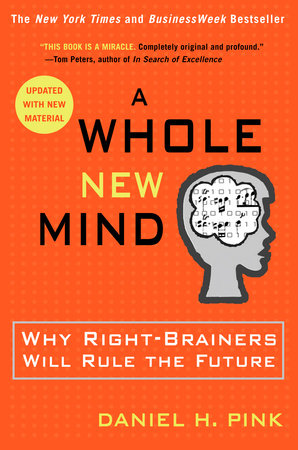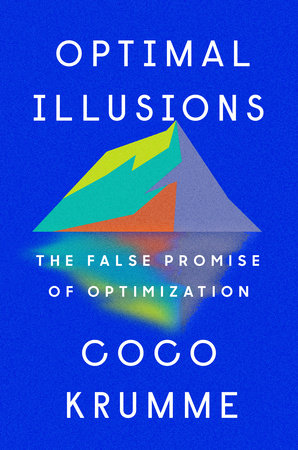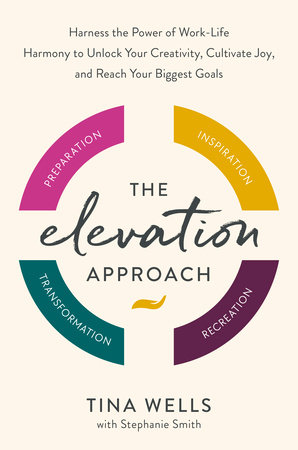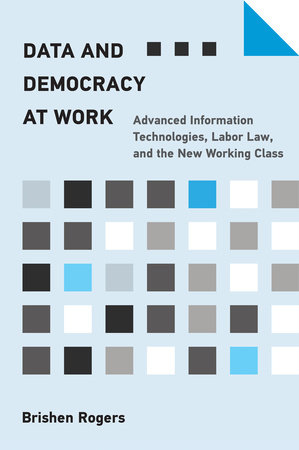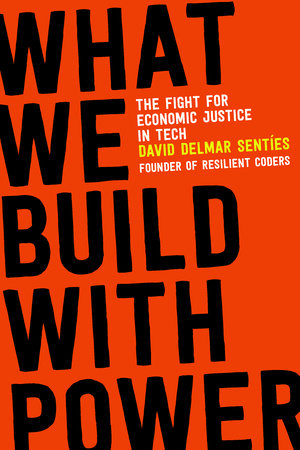Quick Summary
One Sentence Summary
“A Whole New Mind” by Daniel H. Pink explores the shift from left-brain to right-brain thinking in the modern world, emphasizing the rising importance of creativity and empathy.
Big Idea
The big idea is the transition from the “Information Age” to the “Conceptual Age,” where right-brain qualities such as design, storytelling, and symphony are becoming crucial for personal and professional success.
Five Key Ideas
- Conceptual Age: Understanding the shift from logical, linear left-brain skills to artistic, empathetic right-brain abilities.
- Six Senses: Pink introduces six essential right-brain directed aptitudes – design, story, symphony, empathy, play, and meaning.
- Practical Examples: Real-world scenarios where right-brain thinking provides a competitive edge.
- Balance: The importance of balancing left and right-brain skills for optimal performance.
- Future Skills: Preparing for future challenges by nurturing right-brain aptitudes.
Actionable Advice
- Cultivate empathy: Practice putting yourself in others’ shoes.
- Engage in storytelling: Use narratives to communicate effectively.
- Embrace design thinking: Apply it to everyday problems.
- Foster creativity: Through play and exploration.
- Seek meaning: In work and personal life.
About the Author
Daniel H. Pink is a bestselling author, known for his books on work, management, and behavioral science, such as “Drive” and “To Sell is Human“.
Read Next
- “Drive” by Daniel H. Pink for insights on motivation.
- “Outliers” by Malcolm Gladwell for understanding success factors.
- “Creative Confidence” by Tom Kelley and David Kelley for enhancing creativity.
- “Thinking, Fast and Slow” by Daniel Kahneman for a deep dive into cognitive processes.
In Depth
Conceptual Age
The Shift to Right-Brain Thinking
The core of the “Conceptual Age” revolves around a pivotal shift from traditional, logical, left-brain thinking towards more artistic and empathetic right-brain thinking. This idea is foundational in Pink’s book, highlighting the increasing importance of creativity, empathy, and big-picture thinking in today’s world.
In “A Whole New Mind,” Pink vividly illustrates this shift through the example of routine, rules-based tasks becoming automated or outsourced. He explains how jobs that once relied heavily on left-brain skills are evolving or disappearing, making way for roles that require more right-brain attributes.
One detailed example from the book is the story of a software developer. The developer’s job, once considered secure and in high demand due to its technical nature, faces threats from automation and outsourcing. Pink uses this story to show how even high-skill, left-brain jobs are not immune to the changing demands of the global economy.
Pink states, “The last few decades have belonged to a certain kind of person with a certain kind of mind—computer programmers who could crank code, lawyers who could craft contracts, MBAs who could crunch numbers. But the keys to the kingdom are changing hands.”
From my experiences, this rings true. In the tech industry, I’ve seen a notable shift from purely technical skills to a blend that includes creative problem-solving and innovative thinking. For example, in software development, it’s not just about writing code anymore. It’s about understanding user needs, creating compelling user experiences, and approaching problems with a holistic view. These are quintessentially right-brain tasks.
The emphasis on right-brain thinking in the “Conceptual Age” doesn’t diminish the value of left-brain skills but rather underscores the necessity of balancing both. It’s about complementing logical analysis with empathy and creativity to thrive in modern workplaces and societies. This balance is something I’ve found crucial in my work. Combining analytical skills with creative thinking often leads to more innovative and effective solutions.
Pink’s focus on the “Conceptual Age” serves as a wake-up call and a roadmap. It encourages us to hone our right-brain skills, not just to stay relevant but to excel in a world where those skills are increasingly prized. Whether in business, education, or personal development, embracing this shift is key to adapting and succeeding in the ever-evolving landscape of the 21st century.
Six Senses
Essential Right-Brain Directed Aptitudes
In “A Whole New Mind,” Daniel H. Pink identifies six essential right-brain directed aptitudes – design, story, symphony, empathy, play, and meaning. He argues that in the “Conceptual Age,” these six senses are not just nice to have, but they are crucial for personal and professional success.
Design
Pink emphasizes the importance of design in a world where functionality is often a given. He explains that good design is no longer a luxury but a necessity to stand out in a crowded market. A detailed example from the book is the rise of companies like IKEA, which transformed furniture shopping by focusing not just on affordability but also on design. Pink highlights how IKEA’s attention to design played a pivotal role in its success.
Story
Storytelling, according to Pink, has become a powerful way to communicate ideas and connect with others. In the age of information overload, a compelling narrative can cut through the noise. Pink points to the medical profession, where doctors are now being trained in narrative medicine to better understand patients’ stories and provide more holistic care.
Symphony
Symphony, in Pink’s terms, is the ability to see the big picture and connect the dots. It’s about thinking laterally and making unexpected links. He gives the example of entrepreneurs who combine disparate ideas to create innovative businesses. Pink notes, “The capacity to synthesize rather than to analyze is not merely a higher-order skill; it’s the essential skill for the era.”
Empathy
Empathy, the ability to put oneself in another’s shoes, is highlighted as a key skill in building relationships and effective leadership. Pink recounts the growing trend in businesses to foster empathic communication and understanding among teams to enhance collaboration and problem-solving.
Play
Play, often undervalued in the business world, is shown as a critical component for creativity and innovation. Pink underscores how companies that encourage a playful work environment often foster higher levels of creativity and job satisfaction.
Meaning
Finally, Pink talks about the pursuit of meaning and purpose. In a world of material abundance, he points out that people are increasingly seeking work and experiences that provide a deeper sense of fulfillment. He quotes, “The most deeply motivated people – not to mention those who are most productive and satisfied – hitch their desires to a cause larger than themselves.”
These six senses collectively paint a picture of the skills and attributes that are becoming increasingly valuable in the modern world. They represent a shift from traditional, linear thinking to a more holistic, empathetic, and creative approach. For anyone looking to thrive in the “Conceptual Age,” developing these six senses is not just recommended, it’s essential.
Practical Examples
Real-World Application of Right-Brain Thinking
Daniel H. Pink’s “A Whole New Mind” not only theorizes about the shift towards right-brain thinking but also grounds these ideas in practical, real-world examples. He shows how individuals and organizations are applying right-brain aptitudes in various fields, proving that these skills are not just theoretical ideals but essential tools for success.
Medicine: Embracing Empathy
A compelling example in the book comes from the field of medicine. Pink discusses how some medical schools are incorporating courses on narrative medicine—teaching doctors to use empathy and storytelling to better understand and treat patients. This approach moves beyond the traditional focus on diagnosis and treatment, emphasizing the importance of connecting with patients on a human level.
Pink states, “The ability to stand in someone else’s shoes, to understand their feelings, and to help solve their problems is as valuable a resource in medicine as knowledge of anatomy or pharmacology.”
Law: From Analysis to Synthesis
In law, a field traditionally dominated by left-brain analytical skills, Pink highlights the growing importance of right-brain abilities. He gives an example of lawyers who are successful not just because they can analyze legal issues, but because they can empathize with clients, craft compelling narratives, and synthesize information from various sources to present a cohesive argument.
Business: Design as a Differentiator
In business, Pink illustrates how companies are using design as a key differentiator in a crowded market. He talks about businesses that have succeeded not just because of their product functionality but because they paid attention to aesthetics and user experience—typical right-brain concerns. One notable example is Apple, which revolutionized the tech industry by combining cutting-edge technology with sleek, user-friendly design.
Education: Fostering Creativity and Empathy
The book also delves into education, where Pink points out the shift from rote learning to fostering creativity and empathy among students. He discusses educational programs that prioritize arts, emotional intelligence, and collaborative problem-solving, preparing students for a world where these skills are crucial.
Personal Development: Integrating Play and Meaning
On a personal development front, Pink emphasizes the importance of integrating play and meaning into our lives. He suggests that engaging in playful activities and seeking purposeful work can lead to greater satisfaction and adaptability in a rapidly changing world.
These practical examples demonstrate that right-brain thinking is not just a theoretical concept but a tangible and valuable asset across various domains. They underscore Pink’s argument that in the “Conceptual Age,” individuals and organizations need to nurture and apply these right-brain skills to stay relevant and succeed.
Balance
Integrating Left and Right Brain Skills
In “A Whole New Mind,” Daniel H. Pink emphasizes the importance of achieving a balance between left and right-brain skills. He asserts that in the “Conceptual Age,” success hinges not just on the dominance of either side but on the harmonious integration of both.
The Need for a Whole-Brain Approach
Pink stresses that while the right-brain skills are ascending in importance, it doesn’t mean that left-brain skills have become obsolete. Instead, he argues for a whole-brain approach, where analytical and logical skills are complemented by creativity and empathy. He points out, “The future belongs to a very different kind of person with a very different kind of mind—creators and empathizers, pattern recognizers, and meaning makers. These people—artists, inventors, designers, storytellers, caregivers, consolers, big picture thinkers—will now reap society’s richest rewards and share its greatest joys.”
Example: The Hybrid Careers
One detailed example Pink provides is the emergence of hybrid careers, where professionals combine their technical expertise with right-brain aptitudes. He talks about lawyers who are also skilled mediators, using their empathy and understanding to resolve conflicts. He discusses engineers who are also adept in design thinking, bringing a creative and user-centric approach to technical challenges.
The Balance in Education
In the realm of education, Pink highlights the need for curriculums that foster both left and right-brain skills. He points to progressive educational institutions that are integrating arts and creativity into their programs, alongside traditional subjects like math and science, to develop well-rounded thinkers.
The Corporate Shift
In the corporate world, Pink notes the shift from purely analytical decision-making to approaches that incorporate empathy, storytelling, and big-picture thinking. He talks about companies that have succeeded not just through data-driven strategies but by understanding customer emotions and crafting compelling brand narratives.
Personal Growth: Combining Logic and Creativity
On a personal level, Pink encourages individuals to cultivate both sides of their brain. He suggests engaging in activities that challenge logical thinking, like puzzles and strategy games, alongside pursuits that foster creativity and empathy, like arts and volunteering.
Achieving this balance between left and right-brain skills is crucial in navigating the complexities of the modern world. It allows for a more holistic approach to problem-solving, decision-making, and personal development. Pink’s emphasis on balance serves as a reminder that while the world is indeed tilting towards right-brain thinking, the most effective approach is one that harmoniously integrates both hemispheres of the brain.
Adaptation
Thriving in the Conceptual Age
In “A Whole New Mind,” Daniel H. Pink delves into the necessity of adaptation for thriving in the evolving Conceptual Age. He stresses that adapting to the increasing importance of right-brain skills is not just a choice but a necessity for success in the modern world.
The Shift in Job Market Dynamics
A significant example Pink provides is the shift in job market dynamics. He discusses how many traditional left-brain jobs are being automated or outsourced, necessitating a move towards roles that emphasize right-brain skills. He cites the example of graphic designers who have had to adapt by integrating storytelling and user experience into their skillset, going beyond mere technical design.
Pink asserts, “In the Conceptual Age, we will need to complement our L-Directed reasoning by mastering six essential R-Directed aptitudes. Together, these six high-concept, high-touch senses can help develop the whole new mind this new era demands.”
Adapting in Education
In education, Pink talks about the shift from standardized tests and rote learning to approaches that encourage creativity, critical thinking, and empathy. He points to schools that have adapted their curriculums to include project-based learning and arts integration, preparing students for a future where right-brain skills are paramount.
Businesses Embracing Change
In the business world, Pink illustrates how companies are adapting by fostering workplace environments that encourage creativity, collaboration, and play. He talks about organizations that have shifted from rigid hierarchies to more flexible and empathetic leadership styles.
Personal Adaptation: Lifelong Learning
On a personal level, Pink emphasizes the importance of lifelong learning and adapting one’s skills. He suggests that individuals engage in continuous learning, not just in their field but in areas that enhance their right-brain skills, like art classes, storytelling workshops, or empathy training.
Adaptation, as Pink presents it, is about being agile and open to change. It’s about recognizing the shifting landscape and proactively developing skills that are in sync with the demands of the Conceptual Age. This ability to adapt is not just about surviving; it’s about thriving and making the most of the opportunities that arise from these changes.
More
Actionable Advice
- Cultivate Empathy: Practice active listening and try to understand others’ perspectives in both personal and professional settings.
- Enhance Design Thinking: Pay attention to aesthetics in your work, even in small projects. A visually appealing presentation can make a big difference.
- Embrace Storytelling: Use narratives to make your points. Whether you’re teaching, selling, or explaining, stories make your message memorable.
- Develop Symphony: Think big picture. Try to connect unrelated ideas to find innovative solutions.
- Practice Play: Incorporate playful elements into your routine. Creativity often sparks in a relaxed and fun environment.
- Seek Meaning: Align your work with your values. Find purpose in what you do.
- Learn Continuously: Take courses or workshops that enhance your right-brain skills, like art classes or creative writing.
- Adapt: Stay open to change and be willing to evolve your skills and perspectives.
- Balance: Find a harmony between analytical and creative thinking. Use logic, but don’t shy away from intuition.
- Network Diversely: Connect with people from different fields. Diverse perspectives can inspire new ideas.
About the Author
Daniel H. Pink is an acclaimed author known for his books on work, management, and behavioral science. Born in 1964, Pink grew up in Columbus, Ohio. He graduated from Yale Law School but veered away from a legal career, finding his calling in writing and speaking. Pink served as a speechwriter for Vice President Al Gore in the late 1990s. His works, including “A Whole New Mind,” “Drive,” and “To Sell is Human,” are bestsellers that have influenced the global conversation on workplace dynamics. Pink’s belief that intrinsic motivation and creative thinking are key to success underpins much of his work. He advocates for a shift from traditional, reward-based systems to more human-centric approaches in business and education. His TED talk on motivation is one of the most-watched. Pink’s insights aim to inspire individuals to adapt and thrive in rapidly changing environments, emphasizing the value of right-brain qualities. His work combines research with practical applications, making complex concepts accessible to a broad audience.
Read These Next
You might like these similar books
- “Drive: The Surprising Truth About What Motivates Us” by Daniel H. Pink
- “The Element: How Finding Your Passion Changes Everything” by Ken Robinson
- “Outliers: The Story of Success” by Malcolm Gladwell
- “Mindset: The New Psychology of Success” by Carol S. Dweck
- “Thinking, Fast and Slow” by Daniel Kahneman
FAQ
1. What is the main theme of “A Whole New Mind” by Daniel H. Pink?
The main theme is the shift from left-brain dominance to the rising importance of right-brain qualities like creativity, empathy, and big-picture thinking in the modern world.
2. Who should read this book?
Anyone interested in understanding future work trends, personal development, or enhancing creativity and innovative thinking should read it.
3. Does the book offer practical advice?
Yes, it provides actionable advice on developing right-brain skills applicable in various aspects of life.
4. Is the book suitable for business leaders?
Absolutely. Business leaders can gain insights into fostering a more creative and empathetic workplace.
5. How does “A Whole New Mind” relate to career development?
It emphasizes the importance of right-brain skills, suggesting they are increasingly vital for career success in various fields.
6. Does Pink provide real-world examples in the book?
Yes, he includes many real-world examples to illustrate his points, making the concepts relatable.
7. Can educators benefit from this book?
Definitely. Educators can find valuable ideas on incorporating creativity and holistic thinking in teaching.

